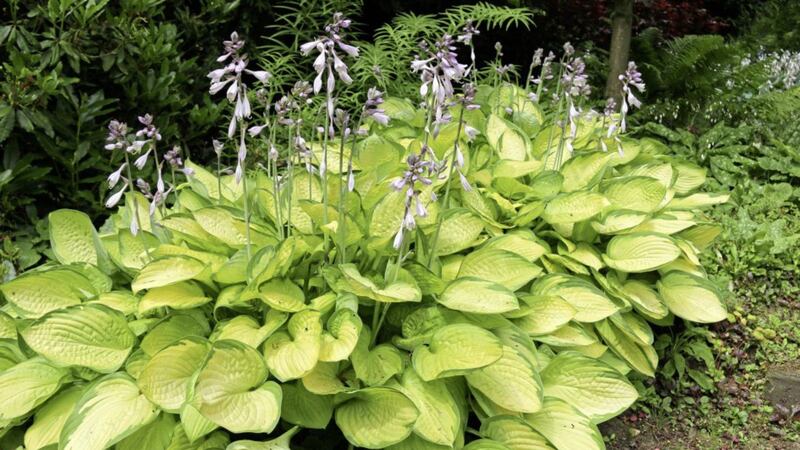NO MATTER how well we think we know spring and its associations with rebirth and reinvigoration, it still has a habit of springing surprises and reminding us what a magical season it is.
Coming relatively late and blessed by warm, sunny weather, the long Easter weekend fell perfectly for showcasing the best of spring. In my own garden, the emerging foliage of summer stalwarts like cranesbill geranium, lady’s mantle and oriental poppies are punctuated by tulips, forget-me-nots, honesty and later-flowering daffodils.
As the leaves appear on the deciduous trees so more birds are finding nesting sites and busying themselves all day collecting materials and food. In the pond, the frogs are basking in the shallows and the sticklebacks are emerging from the depths.
If there’s one more ostensibly mundane seasonal routine I believe I’ll never tire of it’s the arrival of the hostas.
From what looks like dormant ground, the first leaves appear like dragon's teeth breaking the surface. Then, over several weeks there’s a slow but steady unfurling of the distinctive foliage – lanceolate or ovate leaves in everything from the lightest green through variegated to the deepest blue.
Hostas are woodland and upland plants found in the wild in south eastern Asia.
They are hardy, long-lived herbaceous perennials and a great utility plant, happy in any fertile, moisture-retentive garden soil. While they do flower, it’s for their foliage that hostas are primarily loved and, as long as they get some moisture and some sun, most are content – though the more stressed they are, the more susceptible they’ll be to attacks from pests.
Some gardeners maintain there's no such thing as a completely slug-proof hosta, but there are mitigating factors which make them more resilient. My recommendation would be to visit a reputable nursery, buy three mature plants in order to give you some volume and look after them well until established, keeping them weed-free and feeding occasionally.
In terms of varieties, it's said those with thick leaves or leaves coated in a shiny, waxy layer tend to remain unharmed, along with blue-leaved varieties. It's also a good idea to avoid overfeeding as this results in soft, lush leaves which will make the foliage easier to digest. Organic deterrents for slugs include mail order nematodes (Nemaslug) and the likes of Slug Stoppa, a specially treated gravel spread on the surface around the plants.
Homemade repellants include pulverised egg shells, lime, sharp sand, grit or anything with a sharp-edge. You can also boil a few cloves of garlic then spray the cooled liquid onto the leaves.
Copper also acts as an effective barrier but is expensive. In its cheapest form, it comes as tape that can be wrapped around the neck of the container.
From the 2,000-odd varieties available, the recommended slug-resistant ones include 'Sum And Substance', a bold giant among hostas at almost a metre high, with big corrugated green leaves and lilac flowers.
'One Man's Treasure' has darker green leaves but also comes with a reputation for being unpalatable to gastropods.
For two-tone leaves, my favourite is 'Risky Business', a vigorous new sport of 'Striptease' with dark green leaves with a white stripe in the centre and pinkish-lavender flowers.
Apart from the gastropod threat, hostas are generally low maintenance and unfussy, happy in most positions where they avoid hot midday sun. They do best in dappled shade in moist, well-drained soil that is slightly acidic.
Varieties with broad, thick leaves such as 'Gold Standard' and 'August Moon' enjoy plenty of sun, whereas those with thinner leaves scorch easy if exposed to too much.









